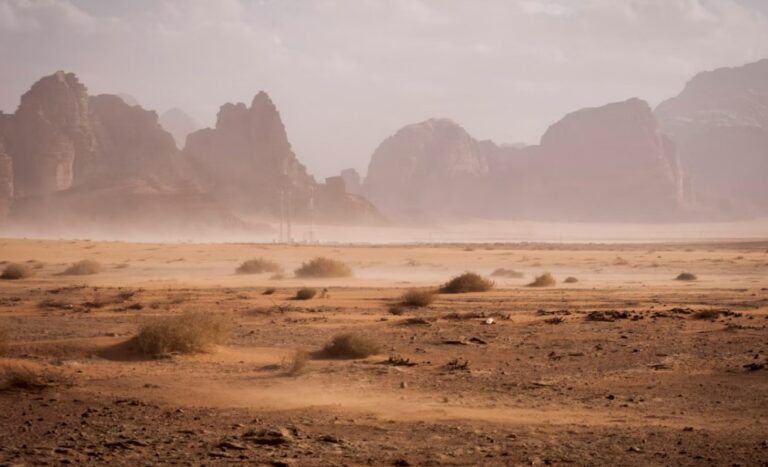During the summer of 2022, records were set that had not been seen for 222 years and temperatures reached as high as 45° in some regions.
But in one place on earth, temperatures even exceeded 70 degrees Celsius.
Table of Contents
Here is where the hottest place on earth is located
When we think of a hot place, immediately the Sahara Desert or some places in Arabia come to mind, where one needs to cover one’s head with clothing to protect oneself from the heat.
But NASA, by installing a satellite in the water, has discovered the hottest place on the planet, where even 70.7°C was recorded in 2005.
This desert is also regarded as the most inhospitable place on earth. Not only because of its high temperatures. But also because of the lack of water and other resources useful for survival.
Rainfall is scarce here and during the year there is about less than 30 mm of precipitation. Which, once it hits the ground, quickly evaporates, leaving behind salt rocks and sand.
Read also: Global warming: what is the key to living on a warmer planet
The hottest place on Earth: the Dasht-e Lut desert
In spite of this, the Dasht-e Lut desert presents a truly incredible panorama. In fact, thanks to the wind carrying sand in the same direction, kalousts are formed.
These are nothing more than deep channels alternating with sand castles up to 300 metres high flanked by large rocks.
From a distance, it may look like a ghostly town. But the scenery has resulted in this place being put on the UNESCO World Heritage list because of its unique ecosystem.
Ruhi Çenet, a Turkish documentary filmmaker, attempted to visit the place in question. He said that the feeling one gets is that of being on a completely different planet from earth.
According to some accounts, there is no life in this place. But the claim is wrong, as the documentary filmmaker discovered that an Eremiaphila, an insect from the praying mantis family, populates this desert without suffering from the high temperatures.
Read also: Climate change: what areas of the world are most vulnerable to extreme heat waves












